Search Results for Tag: Shishapangma
Stricter regulations for expeditions on the Tibetan eight-thousanders
The expedition operators in Nepal might have been so shocked that they dropped their pencils. In the “New Regulations for Foreign Expeditions 2019” in Tibet (available to me) it says under point 6: “In order to ensure the healthy and orderly development of mountaineering and minimize the occurrence of mountaineering accidents, mountaineering teams which were organized in Nepal temporarily will not be accepted.” As I have learned from a reliable source, a delegation from Nepal immediately traveled to China to have this regulation removed or at least weakened. Apparently the delegates of the Nepali operators were at least partially successful. Some agencies, however, are supposedly to receive no more approval. The Chinese and Tibetan Mountaineering Associations announced to cooperate in future only “with expedition companies with good social reputation, strong ability of team formation, logistic support, reliable service quality, excellent professional quality, and (who are) law-abiding”.
![]() read more
read more
Still no Chinese in the 14-Eight-thousander club
The Central Peak is not the main summit of Shishapangma. Climbers and expedition operators who tackle this eight-thousander in Tibet should know this. The Central Peak is at 8,008 meters. From there, the normal route continues over a ridge to the 19 meter higher main summit at 8,027 meters. Only when this is reached, Shishapangma is officially considered as scaled. Many are not too particular about this rule. And so the news was premature that a Chinese expedition had scaled Shishapangma on 29 September and that Luo Jing was the first woman from the “Middle Kingdom” to complete the 14 eight-thousanders. Just a few days later, a Basque mountaineer, who had ascended the same day, piped up and said that nobody had climbed the ridge to the main summit due to bad weather. “They were clearly only on the Central Peak,” tells me Eberhard Jurgalski, German chronicler of mountaineering in the Himalayas and Karakorum, who had received a video of the Chinese group from their turning point. “Luo Jing has already admitted this publicly.”
![]() read more
read more
Successful season record on “Fall’s Everest” Manaslu
I had a déjà vu. When I saw the pictures of the queue of people who climbed up towards the summit of the 8163-meter-high Manaslu this fall, I winced again. Just like in 2012, when Ralf Dujmovits, Germany’s most successful high-altitude mountaineer, photographed the queue of Everest summit candidates on the Lhotse flank. How the pictures resemble each other! No wonder, since Manaslu has turned more and more into “Fall’s Everest” in recent years: Several hundred mountaineers pitch up their tents in the base camp, the route is secured up to the summit with fixed ropes. And if the weather is fine, it’s getting narrow at the highest point.
![]() read more
read more
Luo Jing completes 14 eight-thousanders
Also from the eight-thousander Shishapangma in Tibet, the first summit successes of this fall season were reported today. According to their own announcement, a team of the Russian expedition operator “7 Summits Club” reached the 8,027-meter-high summit , as did a team of the Nepalese operator “Seven Summit Treks”. SST-Board director Dawa Sherpa informed on Facebook, that Chinese Luo Jing was among those who stood on the summit of Shishapangma. It was the last of the 14 eight-thousanders that the 42-year-old still lacked in her collection.
![]() read more
read more
Everest and Co.: Summit successes and a sad news
Mount Everest was scaled for the first time in this spring season. Today, eight climbers from Nepal reached the highest point at 8,850 meters after climbing up on the south side of the mountain. Pasang Tenjing Sherpa, Pasdawa Sherpa, Lakpa Dendi Sherpa, Jen Jen Lama, Siddi Bahadur Tamang, Pemba Chhiri Sherpa, Tenzing Gyaljen Sherpa and Datuk Bhote fixed ropes up to the summit, paving the way for the clients of the commercial expedition teams.
![]() read more
read more
Still no trace of Boyan Petrov
Nobody puts it bluntly. But to be honest, the hope of finding the most successful Bulgarian high altitude climber Boyan Petrov alive on the eight-thousander Shishapangma in Tibet is beginning to fade. On 3 May, nine days ago, the 45-year-old was last seen by telescope from the base camp. Since then, there has been no trace of Boyan. Bad weather had delayed the rescue operation for days. On Saturday, two helicopters of the Nepali company Simrik Air, specialized in rescue operations, started to search for Petrov. Without success. What the crew members found, photographed and filmed as “suspicious objects” near Camp 3 at an altitude of about 7,300 meters, turned out to be stones and rocks when the material was subsequently viewed. The helicopter teams had to return to the Nepalese capital because the fuel ran out. “We are standby at Kathmandu for the same mission,” Simrik Air said. Also the rescue team on the slopes on the mountain, three Sherpas and three Chinese climbers, have not yet found Petrov. The rescuers were spending the night in Camp 2. On Sunday, the search is to be continued.
![]() read more
read more
Search for Boyan Petrov continues
There is still no trace of Boyan Petrov. As reported, the most successful Bulgarian high altitude climber has been missing for days on the eight-thousander Shishapangma in Tibet. The Bulgarian government has joined the rescue operation. Prime Minister Boyko Borissov said they were in constant communication with the authorities in Nepal and China, as well as with Petrov’s family. According to Foreign Minister Ekaterina Zaharieva, a helicopter suitable for flights in high altitude is now available to search for the 45-year-old. Directly on the slopes of the mountain, a rescue team of three Chinese climbers and three Sherpas is in action. Despite bad weather, the rescuers had climbed to Camp 2 at 6,900 meters, it said.
![]() read more
read more
Concern over Boyan Petrov
The most successful Bulgarian high altitude climber, Boyan Petrov, has been missing for several days on the eight-thousander Shishapangma in Tibet. This was confirmed today by his partner Radoslava Nenova on Facebook. According to her, a search for Petrov is to begin tomorrow. Previously, the team of the Hungarian climber David Klein reported that the 45-year-old Bulgarian had set off on 29 April for a solo attempt without bottled oxygen. On 3 May, last Thursday, Petrov was seen from base camp by telescope at the level of Camp 3. On Saturday, an Ukrainian and three Sherpas reached Camp 3 at about 7,400 meters and found Boyan’s semi-open tent with his sleeping bag, covered in snow. Obviously, Petrov had left for the summit.
![]() read more
read more
Carlos Soria: Dhaulagiri, take nine!
Carlos Soria doesn’t give up. The now 79-year-old Spaniard set off again to Nepal to climb his 13th of the 14 eight-thousanders. Already for the ninth time, Carlos will tackle Dhaulagiri. Last year, Soria and Co. had had to abandon their only summit attempt in the upper part of the 8,167-meter-high mountain because they had missed the right route while the fog had become denser. Later heavy snow had impeded a second try. “This time I am sure that we will succeed,” said the probably fittest of all climbing seniors optimistically before his departure for Kathmandu.
![]() read more
read more
Simone Moro turns 50: “I’m still alive”
It does not hurt more than usual. I can say that from my own experience. It is rather a mental challenge to realize that the first 50 years are over and the second half of life has definitely begun. Time to take stock. This Friday, Simone Moro celebrates his 50th birthday. The Italian can already be more than satisfied with his career as a high-altitude climber. No one else besides Simone has four winter first ascents of eight-thousanders on his account.
In 2005, Moro summited along with the Polish climber Piotr Morawski the 8027-meter-high Shishapangma for the first time in the cold season. Three other first winter ascents followed: In 2009 with the native Kazakh Denis Urubko on Makalu (8,485 m), in 2011 with Urubko and the American Cory Richards on Gasherbrum II (8,034 m) and in 2016 with the Spaniard Alex Txikon and the Pakistani Muhammad Ali “Sadpara” on Nanga Parbat (8,125 m). Simone did all these eight-thousander climbs without bottled oxygen. Last spring, Moro and the South Tyrolean Tamara Lunger had planned to traverse the four summits of the Kangchenjunga massif, but had to turn back without having reached a single summit. Two attempts ended at 7,200 meters, because Simone suffered from stomach ache. Moro is married to the South Tyrolean climber Barbara Zwerger and has a 19-year-old daughter and a seven-year-old son. Simone has also earned his merits as a rescue helicopter pilot in the Himalayas.
Simone, half a century in your legs, how does that feel?
![]() read more
read more
China reacts allergically to Pakistan visas
Nasty surprise for some climbers heading for destinations in Tibet this spring: I have been confirmed by several sides that China currently does not allow tourists to enter Tibet in case that there is a visa for Pakistan issued in the past three years in their passport. Especially professional climbers, who like to tackle the impressive mountains of the Karakoram in summer, run the risk of not obtaining a visa for Tibet. Some mountaineers are stuck in the Nepali capital Kathmandu, because they have learned too late about this new regulation. So if you want to travel to Cho Oyu, Shishapangma or the Tibetan north side of Mount Everest and do not want to experience a bad surprise, take a look at your passport!
![]() read more
read more
China fuels the price spiral – and invests
Climbing on an eight-thousander in Tibet is getting more expensive, not only on Mount Everest. According to documents available to me, the Chinese Mountaineering Association (CMA) has significantly increased the prices for the climbing permits on Everest, Cho Oyu and Shishapangma, on average by more than 30 percent. Since the beginning of the year, the CMA claims 9,950 US dollars per mountaineer for the climb of the highest mountain on earth in case of four or more team members. So far the Everest Permit cost about 7,000 dollars per head. 7,400 dollars are now due for Cho Oyu, 7,150 dollar for climbing Shishapangma from the north side and 7,650 dollars for an ascent from the south side of the mountain. For smaller teams of up to three, the permit costs are even in a five-digit range: 19,500 dollars per person on Everest, 12,600 dollars each on Cho Oyu and Shishapangma.
![]() read more
read more
Billi’s fifth 8000er
Done! „Summited Cho Oyu at 1 p.m. today without supplemented O2”, Billi Bierling tweeted. “It was a long and exhausting day. Thanks to all of you for keeping fingers crossed.” For the 49-year old German journalist and mountaineer it was her fifth successful eight-thousander ascent and after Manaslu in 2011 the second without breathing mask. In her first attempt on Cho Oyu eleven years ago she had not been able to climb further than 7,200 meters. “It was my first eight-thousander”, she wrote to me one and a half weeks ago. “At that time I was convinced that I am not strong enough for such high mountains.”
![]() read more
read more
Shishapangma, the last take!
A chewing gum is not getting better by chewing it endlessly. There must come a time to spit it out. Stories are a similar ballgame. At a certain moment everything has been devoured a 1000 times. Then you should have the courage to draw a line under it before it becomes a never ending story, which is still only annoying. This will be my last blog post on the avalanche on Shishapangma which happened on next Saturday, exactly two years ago. Maybe not yet everything is said, but in my view it’s enough to close the chapter – and hopefully learn from it.
![]() read more
read more
Controversy over avalanche on Shishapangma
24 September 2014, 6.55 a.m.: Five men are climbing at 7,900 meters towards the summit of the eight-thousander Shishapangma when the avalanche releases. The Germans Sebastian Haag and Martin Maier and Italian Andrea Zambaldi are swept several hundred meters down the slope. German Benedikt Boehm and Swiss Ueli Steck have a lucky escape and get away from the snow masses. The 36-year-old Haag and the 32-year-old Zambaldi die. Maier miraculously survives and is able to escape by his own strength to the high camp. The news of the incident first appears in my blog. The first interviews about the avalanche with Bene Boehm and Martin Maier can also be read on “Adventure Sports”.
“Time does not heal everything”
More than one and a half year later, Martin has opened up a debate on the incident by giving an interview to the German magazine “Bergsteiger”. The 41-year-old industrial engineer is in his own words still suffering from long-term effects which are not only health problems: “Time does not heal everything – neither injuries that have remained to this day nor the sadness and bitterness about the fact that people want to increase their self-esteem at the expense of others.” Maier accuses the other two survivors of the avalanche, Boehm and Steck, of not having told the truth and of having abandoned him too quickly.
![]() read more
read more



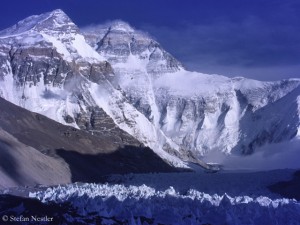

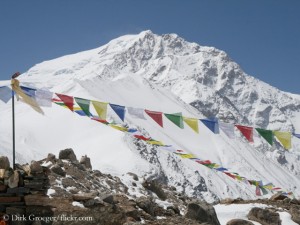
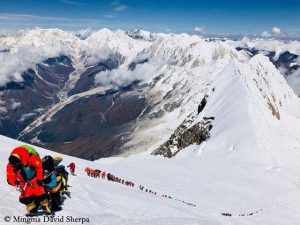
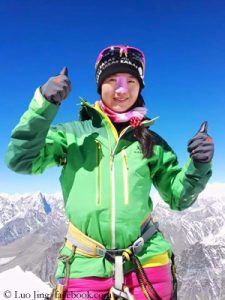
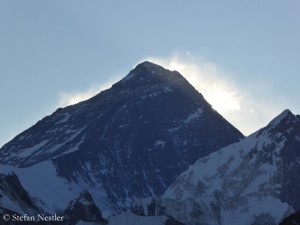
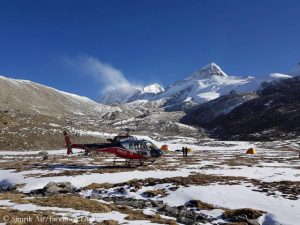
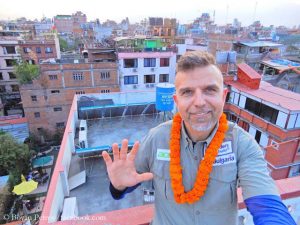

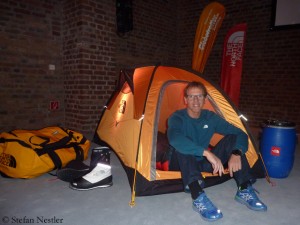
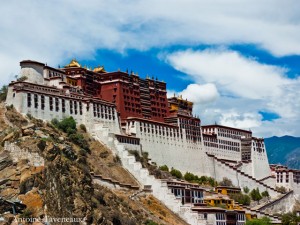
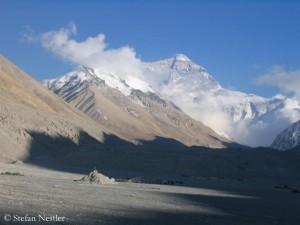
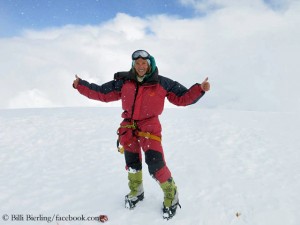

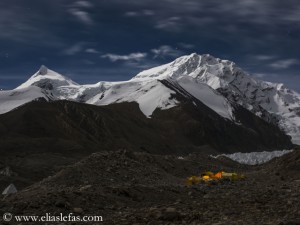





Feedback